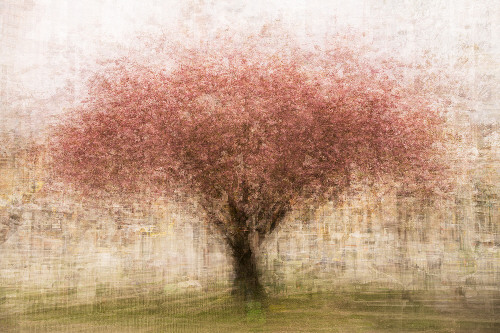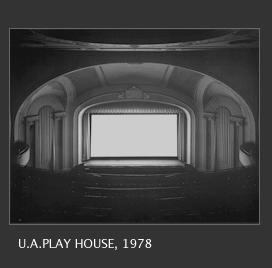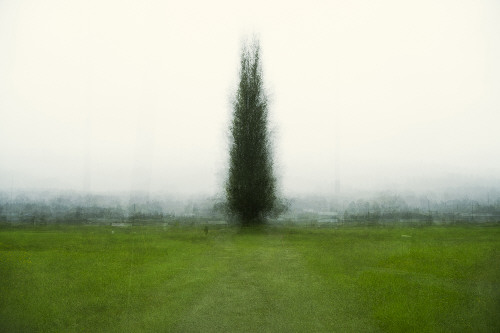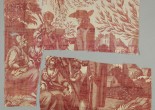Bill Anderson // Continuum @ Winsor Gallery
Bill Anderson’s photographic series Continuum at Winsor Gallery allows an opportunity to rediscover the mundane through an experimental photographic process
Written by Adam Stenhouse
Bill Anderson photos courtesy Winsor Gallery website
Hiroshi Sugimoto photo courtesty sugimotohiroshi.com
I am always a little wary of photographic work that doesn’t necessarily look like a photograph. I think it’s the reactionary laying not-so-deep down within me somewhere. I think the wariness stems from the love of how photography engages with subjects externally from itself. And this leads to a worry about imagery that explores what photography is when it doesn’t engage with an external subject; a case of art about art. I see the point of examining a medium, exploring what it can be by pushing its preconceived boundaries. I see the point of making images with a self awareness of their creative process; it plays an important role in artistic development. I know it can challenge the viewer to re-consider the image they are engaging with, they don’t just look at the visual elements, but consider how it came to be. However, I also feel artists sometimes get lost in the perceived significance of examining and potentially altering their medium to focus on this one point. I think photography works best when it challenges the visual conventions of what a photograph is by engaging with how an external subject is recorded and shown to a viewer, rather than how the image is itself crafted.
That’s a bit of a mouthful. Let me put it another way. When Bill Anderson experiments with the creation of a photographic image by turning his attention to the world around him, well, I breathe a slight sigh of relief; *sigh*.
Anderson’s method for Continuum is to record the world through multiple exposures. He turns his attention to a place or object and photographs it many times. What is created is a cubist-esque view of a place or object seen from all sides at multiple points in time. We see it all together at once. It is a philosophy similar to Hiroshi Sugimoto’s Movie Theatres where Sugimoto records his image for the duration of a film; what appears on the image he takes is a white rectangle where the negative has been burned out, around it is the shadowy architecture of the theatre. We, the viewer, see the whole film at once, recorded and flattened into a white rectangle. So with Anderson’s work we see a similar vision, a place or object from multiple directions all at once.
Sometimes this works, sometimes not so much. I think when Anderson turns his attention to objects that can be circumnavigated, such as a tree or silo, we are taken around and experience the many views all at once. When it works, it creates a beautiful image of fragmented moments, that just about describes the whole it intends to show. Sometimes, though, it becomes an overbearing method, distorting the subject to a mass of colours and shapes that feels lacking in a focus yet all too easy to decipher. Alleys is a prime example of the latter. I see one of the many alleyways of Vancouver, distorted but still so incredibly banal, and I am not excited by the broken visual attempting to re-present a photographic trope of the city.
Axis Mundi, the lead image from the show, is the direct opposite; mundane in that it is an image of a tree, but delicate, ephemeral, in a constant state of movement. It is a stunning image of dulled greens, faded greys and dirty whites. There are several images like this in the exhibition: Plastic Bag, Tree and Surroundings, River Walk and Grain Elevator, Dorothy. They shiver and shimmer in the various lights they were created under. They offer up their subject but not its details, obfuscating the world by showing it all at once. They are also visually striking; beautiful in tone, colour and melancholic atmosphere.

Bill Anderson, Tree and Surroundings, 2014. Archival pigment print on 300 gram rag paper. 20 X 30 in. , edition of 10
Speaking with a gallery assistant, I was informed that the images are created as multiple exposures, and are not manipulated digitally through layering in Photoshop or similar program. I don’t know how I feel about learning this part of Anderson’s practice. I could have guessed either way. For certain images, some look like experiments in computer manipulation, others have a painterly impression caused by the glimpses of layered imagery emerging and then vanishing under another detail. It felt like an unimportant sidenote about the process, when what was engaging me was this renewed vision of the mundane world.
I found it interesting that in Anderson’s room there was a video of an interview with the painter Gary Pearson, whose work was showing in the adjacent room. In it, there was a reference Pearson made to Bertolt Brecht’s Distancing Effect, which is often referred to as defamiliarization in visual arts, suggesting that a regular image presented in an alienating way seems strange, yet familiar. I feel this succinctly sums up what Anderson is doing through the images in Continuum. The images are familiar; we all know a tree, a city alleyway, but when they are made to appear strange whilst maintaining their simple familiarity, then we are alienated from its routine place in our world. This makes us re-examine the familiar, allowing us to re-discover what it is, how it appears to us, and its role in the world around us. When art challenges us in this way, opening a window to see anew, then it succeeds in enriching us.
Continuum ran Sept 11 – Oct 11 2014 at Winsor Gallery
winsorgallery.com/exhibitDetails.asp?tid=Exhibit_Anderson14




